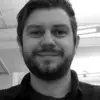With radiologist workforce shortages looming, one subspecialty faces ‘severe’ declines
Top imaging experts are warning of a “severe” national shortage of pediatric radiologists and have called on the specialty to step up and reverse the worrying trend.
The number of pediatric fellows has been falling since 2014, and 44% of programs don’t currently have any fellows, experts explained in JACR. What’s more, 38% of pediatric rads are projected to retire within the next decade.
In light of this, pediatric radiologist Shannon G. Farmakis, MD, with Radia, a physician-owned provider group in Lynwood, Washington, and co-authors, called on the community to get the word out.
Jocelyn D. Chertoff, MD, MS, chair of the department of radiology at Dartmouth-Hitchcock Medical Center and Richard A. Barth, MD, a radiologist at Stanford’s Lucille Packard Children’s Hospital, joined in on the call.
“There is a severe national shortage of pediatric radiologists,” the group warned Sept. 18. “We must all invest in sharing our excitement in our specialty, engaging learners, and educating them about the satisfaction and fulfillment of a career in radiology,” they added later.
The Society of Pediatric Radiology and ACR’s Commission on Pediatric Radiology are already putting resources into this cause. A 2018 survey from the pair found only 36% of residents had exposure to pediatric radiology during medical school.
As a result, the ACR Commission is targeting residents, medical students and premedical students. They’ve developed educational videos, writing campaigns, an engagement subcommittee, social media outreach and other materials to spur interest.
Farmakis and co-authors want prospective pediatric imaging experts to know the negative perceptions surrounding their subspecialty are overblown and greatly outweighed by the positives.
“We owe it to ourselves and to the future of our specialty,” they concluded. “The futures of both pediatric radiology and diagnostic radiology are still very bright.”
Read the full opinion piece here.

